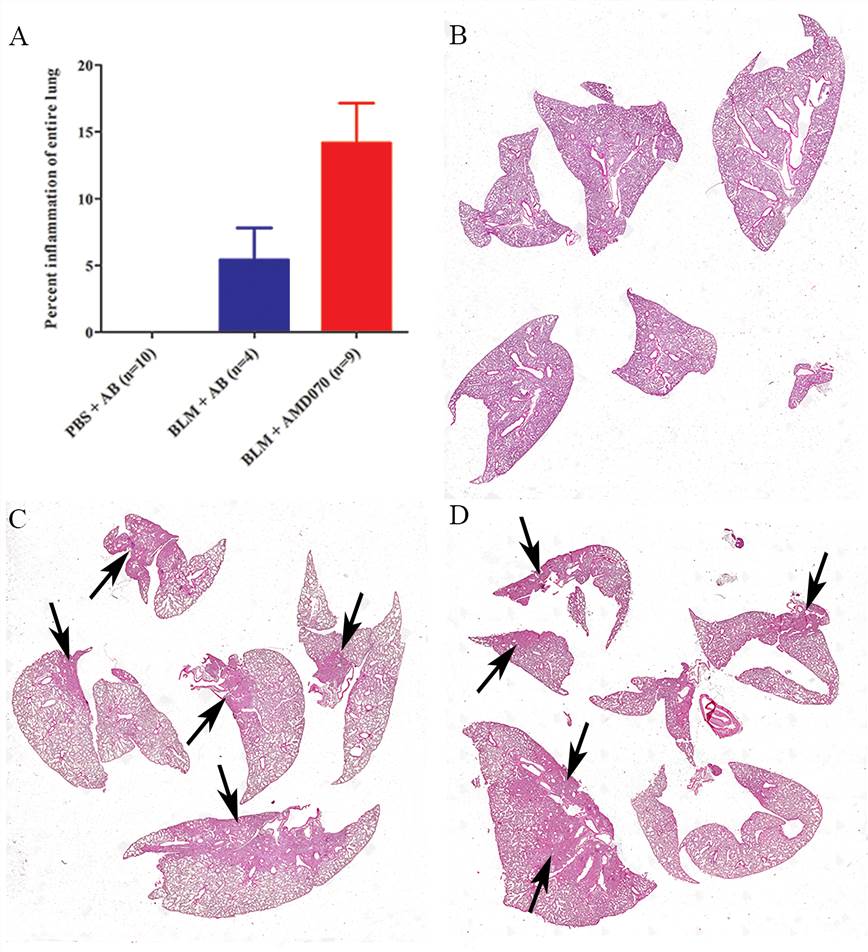Bleomycin induced Pulmonary Fibrosis Model
Creative Biolabs provides the most frequently used model of pulmonary fibrosis that can be induced via intratracheal or intravenous administration of bleomycin into lungs. For evaluation of potential interventions, we offer a broad spectrum of measurements and different administration routes depending on the specific research requirements.
Introduction of Idiopathic Pulmonary Fibrosis (IPF)
Pulmonary fibrosis is a component of many interstitial lung diseases, including idiopathic pulmonary fibrosis (IPF), a chronic, progressive disease for which there is currently no effective therapy. The most common clinical features of IPF include progressive exertional dyspnea, dry, nonproductive cough on exertion, clubbing of the fingers and so on. Different animal models of pulmonary fibrosis have already been developed to investigate the pathogenesis and potential therapies for idiopathic pulmonary fibrosis (IPF). Most of them mimic some of the features of human IPF, among which the bleomycin model in rodents (mouse, rat, and hamster) is the most frequently used standard model.
Bleomycin-Induced Pulmonary Fibrosis Model
Bleomycin, an antibiotic isolated from Streptomyces verticillatus, is one of the first described chemotherapeutic agents and has been applied for cancer treatment for many years. Its use in the induction of animal model is based on the side effect of bleomycin in human cancer therapy. Bleomycin as an agent to induce experimental lung fibrosis was first described in the 1970s and this model has been the most frequently used rodent model of lung fibrosis ever since.
Features of Bleomycin Model
- Bleomycin administration reproduces inflammatory and fibrotic events similar to those seen in human pulmonary fibrosis, such as the accumulation of leukocytes, especially macrophages, followed by the activation of fibroblasts and fibroblast-like cells, as well as the deposition of collagen.
- It is quite easy to perform, widely accessible and reproducible, thus fulfilling important criteria expected from a good animal model.
- Different routes of administration (e.g. oral, inhalation, intravenous, subcutaneous) and dosages have been established for each species to develop various fibrotic patterns and symptoms.
- It has been extensively used by investigators and has contributed tremendously to elucidate the mechanisms involved in fibrogenesis such as the roles of cytokines, growth factors and signaling pathways involved in pulmonary fibrosis.
- They could also be used to evaluate potential therapies and to determine the functional contribution of candidate genes to pulmonary fibrosis.
 Fig.1 H&E stained lungs of PBS plus acetate buffer (B), BLM plus acetate buffer (C) and BLM plus AMD070 (D) treated mice. Graph A represents percentage of surface area with high inflammatory cell infiltrate.
(Chow et al. 2016)1, 2
Fig.1 H&E stained lungs of PBS plus acetate buffer (B), BLM plus acetate buffer (C) and BLM plus AMD070 (D) treated mice. Graph A represents percentage of surface area with high inflammatory cell infiltrate.
(Chow et al. 2016)1, 2
Assessments provided by Creative Biolabs including but not limited to:
- Bronchoalveolar lavage (BAL) analysis
- Morphological examination
- Pulmonary function testing (PFT)
- Lung histology
- Collagen quantification
Additionally, other examples of rodent respiratory disease models that you may be interested and available from Creative Biolabs include:
- Ovalbumin-Induced Asthma Model
- House Dust Mite (HDM)-Induced Allergic Asthma Model
- LPS-induced Pulmonary Neutrophilia Model
- Cigarette Smoke-Induced COPD Model
Creative Biolabs provides far more than these well-characterized models listed above. We are able to provide tailor-made models to a specific project, plus model validation from the literature as well as the development of new models. We are willing to share our state-of-the-art platforms and sufficient expertise with our clients to promote their brilliant studies. If you are interested in any of these services, please contact us for more information or a formal quote.
References
- Chow, L.N.; et al. Impact of a CXCL12/CXCR4 antagonist in bleomycin (BLM) induced pulmonary fibrosis and carbon tetrachloride (CCl4) induced hepatic fibrosis in mice. Plos One. 2016, 11(3): e0151765.
- under Open Access license CC BY 4.0, without modification.
For Research Use Only.
